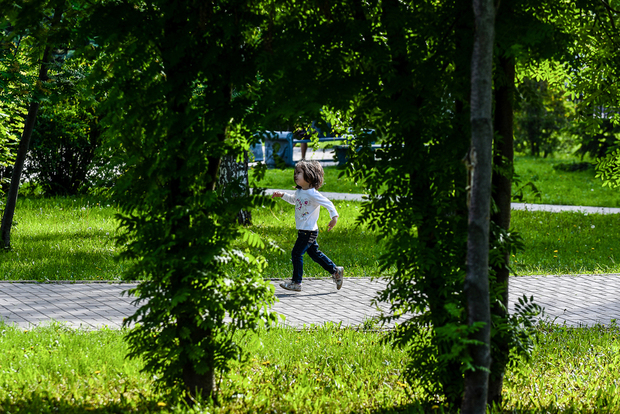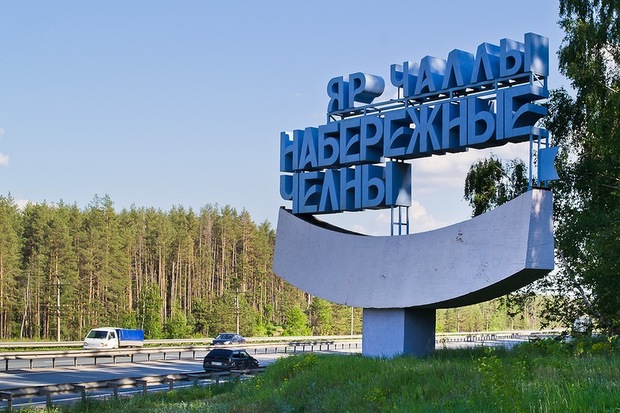Kazan admitted third capital but falls behind Yoshkar-Ola and Ulyanovsk in terms of comfort
The capital of the Republic of Tatarstan is better than the majority of million cities in urban environment quality index but worse than its closest neighbours that are not capitals
The Ministry of Construction of Russia created a quality index of Russian cities. The evaluation system consists of 120 indicators each of which is responsible for a certain type of urban space and reflects the degree of environmental quality by one of the criteria. Research organisers compare the index with a medical express examination that is held to detect major problems. Kazan has problems in almost all the spheres. Social and leisure infrastructure is the only moment where the city won its rivals. In other spheres, neighbouring Cheboksary, Ulyanovsk, Yoshkar-Ola and Naberezhnye Chelny are leaders. Realnoe Vremya tells the details.
Ratings created by selfies and free WCs in parks
The Ministry of Construction of Russia, Agency for Housing Mortgage Lending and Strelka KB created a quality index of Russian cities. Accommodation and adjacent infrastructure, green and water spaces, street infrastructure, public and business infrastructure, social and leisure infrastructure and adjacent space and municipal space are the main indicators. Each of the indicators was evaluated by several criteria – safety, comfort, eco-friendliness, identity and diversity and modernity of environment.
The number of dilapidated dwellings, fires and car accidents, the quantity of crimes and average ambulance response time were considered as well as the number of parks and gardens and free WCs there, the amount of photos taken in public spaces and posted in social networks, traffic congestion and social infrastructure facilities.

All the cities were divided by the number of population and geographical location (it is not correct to compare green spaces in Krasnodar and Anadyr, for instance).
Research organisers compare the index with a medical express examination that is held to detect major problems. ''After detecting a problem, we can switch to its more detailed examination and recommend a specific ''treatment programme''. However, the Russian Ministry of Construction did not mention any ''treatment programme'' while making conclusions. But Kazan architectures and urban engineers prescribed Kazan a ''course of procedures'' a long time ago (lower).
Chelny leaves Kazan behind
The authors considered Kazan among the biggest cities and put it 153 points – it is the third place in the total standing. Moscow expectedly became the leader (221 points), Saint Petersburg is second (196 points), Nizhny Novgorod is fourth (148 points).
The rating has another Tatarstan city – Naberezhnye Chelny is in the list of big cities. Chelny got 163 points in the rating. Tver is the leader here – 180 points.

Curiously, if we don't divide ratings into the biggest and big cities, Chelny left Kazan behind in four positions out of six. Accommodation and adjacent infrastructure as well as street infrastructure were better than in the Tatarstan capital. In addition, in terms of safety – the share of ramshackle houses, number of car accidents with pedestrians and quantity of fires, Chelny got the best result – 10 points. Green and water spaces are better than in Kazan by 7 points. They are more comfortable, ecological and safe. The modernity of environment is the only moment in this criterion where Kazan wins (8 of 10 points). Kazan got the worst result of 1 point for the ecology of green spaces. Public and business infrastructure in Naberezhnye Chelny was also better – the difference is 12 points.
Chelny's municipal space and social and leisure infrastructure is worse.
Good result among million cities and bad among neighbours
In Russia, in general, Kazan looks quite modest despite proud titles of the third capital, sports capital and thick portfolio of international events. Living in neighbouring cities turned out to be more comfortable and safer. For instance, Yoshkar-Ola got 176 points. In addition, the city had higher marks in all indicators. Ulyanovsk has 162 points, less than Kazan for social and leisure infrastructure (here the share of ramshackle health and educational establishments, the percentage of schools and hospitals designed for people with limited mobility, attendance of museums and theatres, availability of sports grounds were considered).
Even if Nizhny Novgorod is far from Kazan in the total standing, it leads in the majority of indicators. For instance, street infrastructure is better, pedestrian availability index is higher, the state of footbridges and underground pedestrian crossings is better, there are fewer car accidents. Municipal space is also better – there are more green zones, less abandoned buildings, it is more eco-friendly defined by air and water pollution degree.

The index of municipal space and street infrastructure was also higher in Kirov. Cheboksary got 172 points having lost to Kazan only in social and leisure infrastructure.
We need to admit the effect of the fight for parks, squares and water protection zones in the last years – among the million cities, Kazan is third with 19 points after Moscow and Petersburg. However, in the full list considering the cities with under 1 million of people, 19 points are one of the worst results. For instance, Taganrog has 37 points, Tambov – 32, Cheboksary – 23.
''We need to try to provide comfort to citizens, not only tourists''
Deputy Chairman of Urban Engineering Department of the Kazan State University of Architecture and Engineering Aleksandr Dembich was sceptical about the results of the Russian Ministry of Construction's rating: ''It doesn't mean it was made accurately and objectively. The question is not who has good data but who knows how to present good data to get a higher rating.''
However, Aleksandr Dembich agrees with conclusions in some positions. According to him, ''we pay a lot of attention to the centre while big residential areas are not improved''.

Aleksandr Dembich: ''We need to try to implement green zones in the city and connect it with the pedestrian network to turn it into avenues. Then the city would have another quality for the citizens, first of all. We need to try to provide comfort to citizens, not only tourists´´. Photo: Roman Khasaev
''If we look at the Social and Economic Development Strategy, which was approved last year, development of planning urban area centres is one of the main goals in the next 5-7 years. So every district will get its own developed centre whose quality won't be worse than municipal,'' Aleksandr Dembich says.
Formation of a green frame of the city is another important task.
''Landscaping is not evenly distributed on the territory – it is poor in the centre and rich on the outskirts. We need to try to implement green zones in the city and connect it with the pedestrian network to turn it into avenues. Then the city would have another quality for the citizens, first of all. We need to try to provide comfort to citizens, not only tourists,'' Dembich says.
The third important task is right about the creation of comfort for citizens – improvement of residential yards.
''The question with parking bays is topical – it is a serious problem. We need to inventory all yards, find out where cars are, find space for parking. If we don't solve this problem, the city will sink in the car problem,'' Aleksandr Dembich tells.